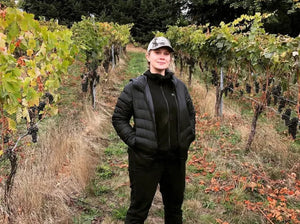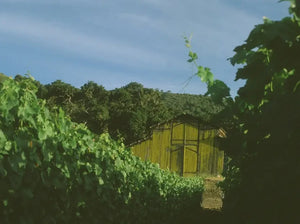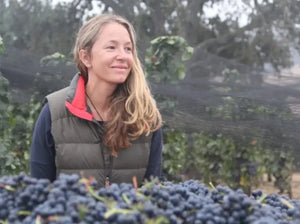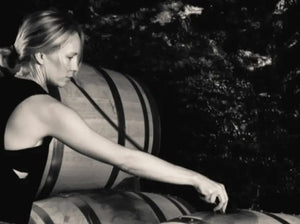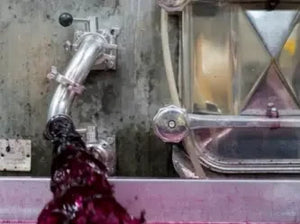Blog » USA
-
Inconnu: California Cabernet Game-Changer
There are U.S. trailblazers, and there are game-changers, but you rarely find both under one roof. Laura Brennan Bissell's appropriately named label Inconnu, meaning "unknown," is the 2023 discovery that had me feeling, well, seen.
I generally drink Cabernet Sauvignon from Bordeaux, Santa Cruz Mountains, and Napa/Sonoma. But I only pull those corks when the menu calls for steak or lamb. Simply put, you won't find me watching a David Lynch flick with a glass of Cab––I don't have the interest to imbibe for 2 hours sans food. And that is why Inconnu is as invigorating a game-changer as I've tasted from California in a long time.
Bissell's wines all carry modest alcohol levels (well below what that even means in the regions above), and they have such beautiful balance and finesse that they disappear fast but offer long-lasting joy. They marry the refreshing qualities of a great Cru Beaujolais with the flavor profiles of ripe-not-overripe Cabernet Sauvignon, where black cherries and currants can be found with notes of eucalyptus and mint that make things a lot more exciting––and delicious!
Another thing that makes clear these wines were destined to be KWM mainstays is their origin, coming from the same distributor/importer as Clos Rougeard, COS, Soldera, Roagna, and Duroché, to name a handful). At the portfolio tasting last month, I was taken by how each red, regardless of their modest pricing, stood toe-to-toe with one another. I went back multiple times for tastes and was still hard-pressed to pick a favorite––they were all endowed with the kind of grace and intensity that separates the good from the great.
Do not miss these GREAT California reds that check all the boxes for Old World wine lovers and "New California" enthusiasts. And don't miss the crystalline Chenin Blanc from old vines in Clarksburg! -
Sta. Rita Hills Sensation: Sandhi Blanc de Blancs
Value aside, Sandhi's 2016 Blanc de Blancs ($36) is the most delicious sparkling wine produced in America today. Full stop. While certainly not defined by citrus and green apple notes of the classic category mold, this 100% Chardonnay is analogous to drinking 20-year-old champagne in its prime with a sprinkle of hazelnut. Deep golden fruit with faint, waxy butterscotch tones and a finish that puts the exclamation point on the fact this is the apex of what extended-aged California sparkling wine can do.
Sashi Moorman and Rajat Parr's 2016 was sourced from arguably the central coast's most heralded single plot of vines––own-rooted, 1971-planted Sanford & Benedict Chardonnay. After fermentation in neutral oak, the wine spent forty months sur lie (on the lees) in bottle with zero dosage. Then, five years aging in bottle post-disgorgement in the Sandhi cellars of Lompoc.
When we tasted it, I was sure the price for such a multidimensional sparkler with so much aging would be around $80. I was shocked to learn we could offer single bottles at just $36. With holiday season in full bloom, this wine leaves the most significant impact at the most palatable price. Do not miss it! -
Angela's Ethereal Grenache: A Tribute to GraceSanta Barbara County is producing some of the most thought-provoking and impressive wines in the U.S. If a sense of place is what we're after, Angela Osborne's Grenache-focused label, A Tribute to Grace, is a great place for the exploration to start.
Working closely with Angela during my time at Failla Wines, in 2011, I remember the first time she poured the Santa Barbara Highlands Vineyard Grenache for our crew, and the enthusiasm that followed. With partial whole cluster fermentation and minimal new oak, the wines are light on their feet and showcase all of the delicacy that Grenache is capable of but rarely achieves in California.
Angela grew up in New Zealand, and upon tasting the greatest expression of Grenache in the world, Chateau Rayas, set out to find the perfect terroir to produce a Grenache-focused label. Angela's grandmother, named Grace, was an equally forceful inspiration toward her landing in California. As terrific as these wines are, knowing the kind person crafting them makes the appeal even greater. -
Timeless Napa Cabernet: Diana Snowden
Finding jaw-dropping hillside vineyards beyond each weave and turn of Napa Valley's roads is common. However, finding winemakers that live up to the landscape by pursuing graceful, nuanced, and site-specific wines is more of a challenge. Diana Snowden Seysess typifies this essence like few others in the valley do, and the winery's history explains why the personification of place is her ultimate intent.
Snowden eschews many winemaking practices that have become commonplace today. No cultured yeasts are employed, no enzymes to enhance color, no "bleeding" of the must for concentration, no fining, and no sterile filtration. Diana presses off the skins when they're dry rather than ongoing maceration to pick up more density and extraction. The wines never see more than 50% new French oak.The Snowden Ranch began in 1878 after the Homestead Act encouraged the settlement of new agricultural lands in the valley. The Snowden family took control of these vineyards in 1955, planting different parcels of Cabernet Sauvignon. Through the 1980s, the family worked closely with Warren Winiarski of Stags Leap Cellars to improve their vineyards. Finally, Snowden Vineyards produced its first wines from the family estate in 1993.
Diana grew up in Napa Valley and graduated from the UC Davis Viticulture and Enology program. In 2003, she became the oenologist at Domaine Dujac and worked alongside her now-husband, Jeremy Seysses, crafting some of Burgundy's most celebrated wines. Her time between Napa and Burgundy brings extraordinary perspective. These wines re-shape how Napa Valley speaks to sense of place. -
Quintessential California Syrah: Piedrasassi
Santa Barbara's cool-climate wines have growingly become one of my obsessions. For me, the most integral name in the array of labels is Sashi Moorman. His Pinot Noir, Chardonnay, and Gamay are among my favorites, but his first label, Piedrasassi, offers downright delicious and complex reflections of Syrah.
Piedrasassi harnesses savory, bright, and superior aromatics while never shying away from the innately luscious qualities that define California Syrah. They nail the roasted meat, violet, and black pepper trifecta at each price point. The P.S. bottling, sourced from a handful of Piedrasassi's single vineyards, is the perfect introduction to their philosophy on cool-climate Syrah, and the vineyard-designate bottlings best exemplify how these wines continually develop in bottle over many years.
Sashi vinifies and ages as naturally as possible, excluding sulfur at fermentation and only utilizing native yeasts. Whole cluster inclusion and aging in larger 500-liter barrels ensure the lively, crushed rock virtues that make Northern Rhone Syrah so unique aren't lost here in Santa Barbara.
.svg?v=162776257677185172071724397232)



